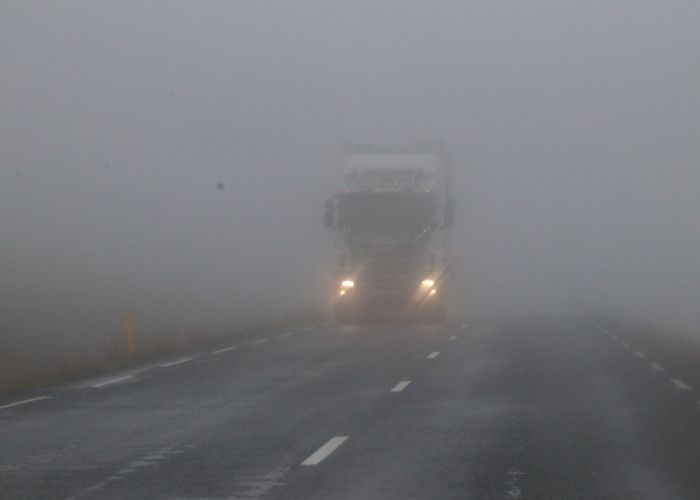According to provisional data for 2021, from a total of 501 accidents in Spain last year, 324 occurred in fog. Thirteen of these were fatal. This week, the Spanish traffic authority DGT installed a fog warning system in Galicia that is pioneering in Europe.
Thanks to the new facilities, the number of traffic jams on the Cantabrian motorway, the A-8, which passes through Alto de O Fiouco (Lugo), at an altitude of 698 metres, will be reduced by 78% and the road will be safer for traffic. This was stated by the Galician government representative, José Miñones, at the presentation when the system, became operational this week. The aim is to make the road connecting Galicia with Asturias, Cantabria, and the Basque Country more passable and prevent accidents.
In July 2014, a multiple vehicle accident on the A-8, involving around 40 cars, led to a woman´s death. Since then, the DGT has been obliged to close this road to traffic and divert vehicles to the old N-634 road near Concello de Mondoñeno when visibility is reduced. According to DGT data, the two-lane road was closed for 3281 hours between September 2014 and November 2021 due to fog.
Technology
The system consists of 372 luminous devices placed along a 4.5km stretch on either side of the road. It goes a step further than the automated diversion – via the N-634 – introduced in 2016.
Existing technology underpinned this project, which is revolutionary in both innovative and economic terms within Europe. It ensures that the motorway is closed for a significantly shorter period of time and that road safety is improved considerably on the section in question. The system not only warns of dense fog but also indicates to the driver what distance to keep for safety.
Detectors follow-up to earlier experiment
According to the DGT, the entire stretch of road in question has been divided into 50-metre sections in both directions. Detectors were placed on either side of each section. On a 1.50 metre pole, these have two windows, the lower with amber LED and the upper with red LED. During fog, the lower amber windows light up to alert the motorist to the fog. The red window lights up when the beacons detect, via different technologies, another vehicle. This makes the vehicle in front visible from a distance of about 100 metres, making traffic safer.
Read also: Holiday travel tips on the roads in Spain
In 2018, similar beacons were placed on a 400-metre stretch as an experiment. Now it has been extended to about 9 kilometres (4.5 in each direction of travel). The DGT has invested €873,127 in this project.
Safe distance
In addition to the detectors, a vertical information panel has been installed to warn motorists that they are driving on a road section that is prone to fog and that they should maintain a minimum distance from two of the installed beacons. When the sight distance due to fog is less than 40 metres and it is not possible to drive safely, the traffic controllers set the black and the A-8 is closed to traffic, with traffic being diverted to the N-634, an alternative two-lane road between kilometre points 536 and 552 in both directions.


